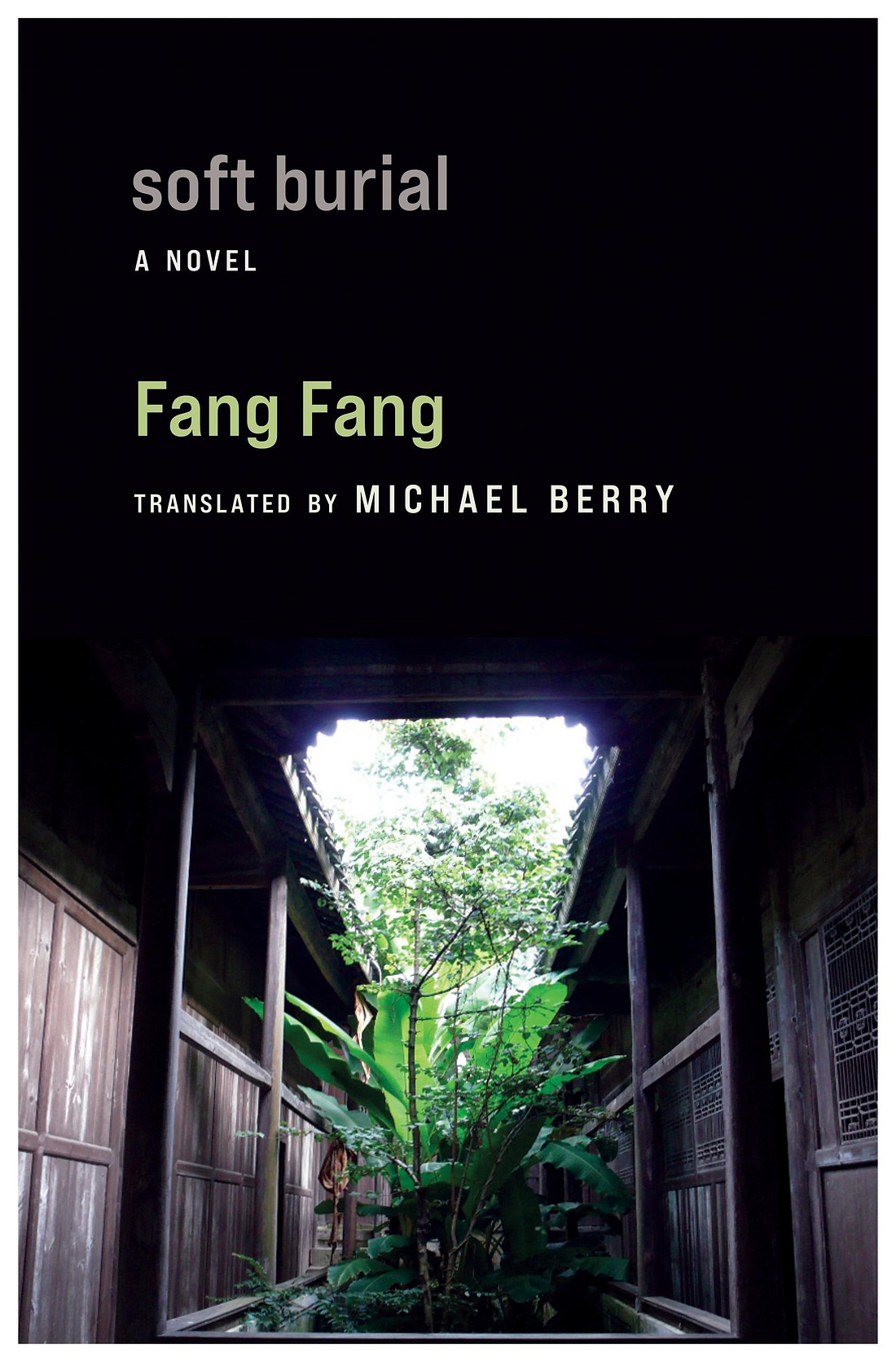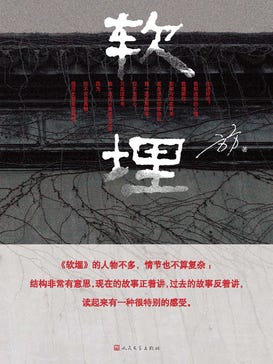Source: China Unofficial Archives (8/15/25)
The CCP’s Original Sin: Why a Historical Novel About Land Reform Resonates Today
By Ian Johnson
[中国民间档案馆 China Unofficial Archives is a reader-supported publication. To receive new posts and support our work, please consider becoming a free or paid subscriber at the above link.]
Seen from today’s perspective, the early years of the PRC can seem like ancient history. Compared to problems facing people today—the end of term limits on top leaders, attacks on civil society organizations, ever-tightening ideological control, the refusal to discuss the origins of the COVID pandemic—events from the middle of last century might be regrettable but irrelevant.
And yet one campaign from that era continues to reverberate today: land reform—a violent, aggressive campaign of torture, murder, and mob rule that the Communist Party used in the late 1940s and early 1950s to bring huge swaths of Chinese society to heel.
Its importance has made it the ultimate taboo, the regime’s original sin that can never be discussed. Over the decades it has been possible to criticize some upheavals, even major ones such as the Cultural Revolution. But land reform is so fundamental to how the party took power that it remains off limits to criticism, portrayed solely as a benevolent campaign that brought fairness and prosperity to China’s long-suffering farmers.
This context is what makes Fang Fang’s 2016 novel, Soft Burial, so important. Independent historians had been exploring land reform for years before Fang Fang’s novel was first published by the People’s Literature Publishing House. But Fang Fang is one of her country’s best-known novelists, a 70-year-old member of the literary establishment. After Soft Burial was published, it won the Lu Yao literary prize (named after the writer Wang Weiguo, who went by the penname Lu Yao) and was widely discussed, until a left-wing backlash prompted censors to ban it.
The novel’s title comes from the practice of burying someone without a coffin, which in traditional China would only be done in haste, usually after a disaster. This is exactly what befell rural China when land reform became a tool for social revolution.
Initially the idea of returning land to the tiller enjoyed broad support and was largely carried out moderately. About 80 percent of Chinese lived in the countryside and many lacked land while some had huge landholdings. Poverty was endemic. Early on, landowners were allowed to voluntarily transfer land to tenant farmers. In other cases, the party issued bonds, used the proceeds to buy out landowners, and then redistributed the land.
The party followed this policy because more radical efforts that had been tried earlier had proven unpopular. In Communist Party jargon, rural China was called “feudal,” and farmers were labeled “peasants,” conjuring up serf-like conditions. The reality was far different. In the eastern part of Sichuan, where Soft Burial takes place, landholders owned on average just 2.4 mu (Chinese acre) of land and most worked the fields alongside hired hands. The people that the party called “landlords” were relatively normal farmers who were only a bit wealthier than their neighbors, rather than the rapacious monsters of Chinese Communist Party propaganda.
Eventually, however, the party dropped moderate policies as it tried to push totalitarian control over the country. The land-owning gentry had been the backbone of traditional Chinese society and a bulwark against radicalism. It was this educated class that built schools, roads, managed temples, and raised militias to fight bandits. If the party was to radically restructure Chinese political, economic, and cultural life, this class had to be destroyed and replaced with a new bureaucratic caste of Communist Party officials.
The turning point came in 1947, when the tide in China’s civil war was turning in the party’s favor. That allowed it to jettison moderation and instruct local party activists to promote violent rural revolution. (See endnote 1.) Party officials urged villagers to “speak bitterness,” whipping up anger and hatred against landowners. After taking power on Oct. 1, 1949, the party ramped up the pressure, twinning the campaign with one against people it called “counter-revolutionaries.”
The result was the first mass campaign of violence in the People’s Republic. Independent Chinese historians estimate that up to 2 million landowners were killed, including entire families. (See endnote 2.) Survivors were beaten, tortured, raped, and became a class of formal outcasts for the next thirty years—denied jobs, promotions, or higher education. Each successive campaign, including the Cultural Revolution of 1966-76, further attacked these people, causing unspeakable misery for tens of millions.
With no brakes on the party’s power, rural China plunged into ever-greater crises. Soon after giving the farmers land, the party expropriated it in the mid-1950s to create communes and implement policies that led to the Great Famine, which killed up to 45 million. (See endnote 3.)
Even today, farmers only have land-use rights but do not own their land, depriving them of capital and subjecting them to party directives on how to use the land. During the party’s two-decade-long push to urbanize China many farmers had to surrender even these meager rights in exchange for an apartment and a welfare check. In other words, rural China’s persistent problems are partly rooted in the campaigns from that era.
This political story underlies Soft Burial. The novel is based in the present, with the story of an old widower in the central Chinese city of Wuhan whose life seems to be taking a turn for the better. As a very young woman sometime around 1950, she had been found unconscious on the banks of a river, nearly drowned. When she awoke, she was suffering from amnesia. She evidenced some education—she could recognize storylines from a classic novel and mythology—but China was at the beginning of communist rule and so a kindly doctor advised her to hold onto her amnesia. Illiteracy and ignorance, he told her, was her best protection.
After several years the doctor was widowed and the two married. They had a son but the doctor died and the woman had to raise the boy alone. By now the Mao era was over and China was opening up. The son went off to work in China’s southern boomtowns, made good, and returned to Wuhan. He bought an opulent villa and moved his mother in, intending to bring his wife and child.
What should have been a happy end, however, triggers something in the old woman. The wealth, the prosperity—it all seems dangerous to her. She falls into a coma.
The novel continues on two levels: one is the inner journey of the old woman as she travels to the eighteen levels of Chinese hell. Each one reveals a new part of her story, working back chronologically from the time she was discovered on the riverbank. She sees herself on a boat holding a baby, the boat capsizing, the child drowning, and herself being sucked under. Then working back she sees her life as the wife of the son of a landlord, the family’s mass suicide in the face of persecution, the servants dying with them, and her own parents murdered for owning land.
The other storyline is based in the present and concerns her son, who gradually learns about his family’s past. His father has left him a trunk with instructions only to open it when his parents are dead. His mother’s catatonic state leads him to look inside, where discovers diaries showing how his father had also been born into a landowning family but had hidden his background to escape persecution.
The son later travels with an old friend, now an academic, who is leading a team of students to draw up an inventory of the old villas in the east of Sichuan province. The villas once belonged to the gentry but now are rotting in the mountains. The son begins to piece together his family’s repressed trauma.
As a work of literature, the novel has its flaws. The stories are almost too perfectly synchronized, with every loose end tied up. Not only does the young man coincidentally travel to the same part of the country where his mother was born, but he finds the very villa where his mother once lived, and the secret tunnel to the river that she took to escape. At one point, the story is told to a character in the novel who exclaims “It sounds like a television drama!”
That said, the story is still riveting and Fang’s ability to keep the multiple story lines rolling is impressive. This is little wonder because she is one of China’s best-known writers, who has made Wuhan the site of many of her signature tales about working-class families from the hinterland.
Abroad, she is best-known as the author of Wuhan Diary, an account of the city’s lockdown five years ago, one that initially controlled the virus’s spread but set the stage for years of increasingly arbitrary, cruel, and ineffective lockdowns across China.
Soft Burial challenges some stereotypes that many people have of China. While many say that China is nothing more than an authoritarian black hole ,the reality is that the country still has a broad movement of independent writers, thinkers, and filmmakers—some on the fringes of society but some, like Fang Fang, firmly part of the establishment.
Soft Burial, for example, is based on a true story unearthed by Professor Tan Song (谭松), who spent years researching land reform in Sichuan province. Others have also begun to mine this era for clues to China’s current authoritarian malaise. Last year, the independent filmmaker Wang Xiaoshuai released a film on land reform (Above the Dust, or 沃土) that drew a direct line from those events to the impoverishment of rural life today.
Not surprisingly, land reform remains taboo. In 2021, the Cyberspace Administration of China issued a list of ten “historically nihilist” rumors that must be banned—one of them, of course, was reconsideration of land reform. The government’s goal is to keep Chinese people in a state of amnesia over the past, but novels like Soft Burial show that the past keeps getting dug up in China.
Endnotes:
- Li Fangchun 李放春, “Dizhuwo’ li de qingsuan fengbo—jiantan beifang tugaizhong de “minzhu” yu “huai ganbu” wenti, ‘地主窝’里的清算风波——兼谈北方土改中的’民主’与’坏干部’问题,” [The Liquidation storm in the “landlord nest”: and talks on “democracy” and “bad comrade” questions in the northern land reform] aisixiang, last modified 4 February 2009, https://web.archive.org/web/20221202185703/https://www.aisixiang.com/data/24580.html.
-
2 million deaths in land reform see Tan Song cited Brian DeMare, Land Wars: The Story of China’s Agrarian Revolution (New York: Oxford University Press, 2019), 161–162.
-
45 million deaths as per Frank Dikötter, Mao’s Great Famine: The History of China’s Most Devastating Catastrophe, 1958–1962 (New York: Bloomsbury, 2011).
Recommended archive:
(Publisher URL for the English translation: http://cup.columbia.edu/book/soft-burial/9780231214995)


